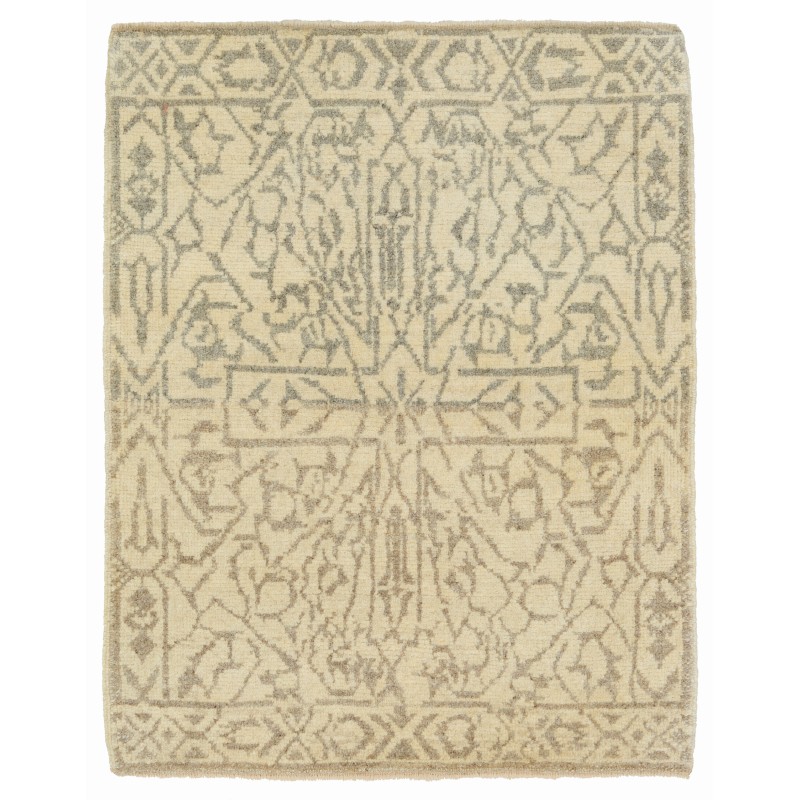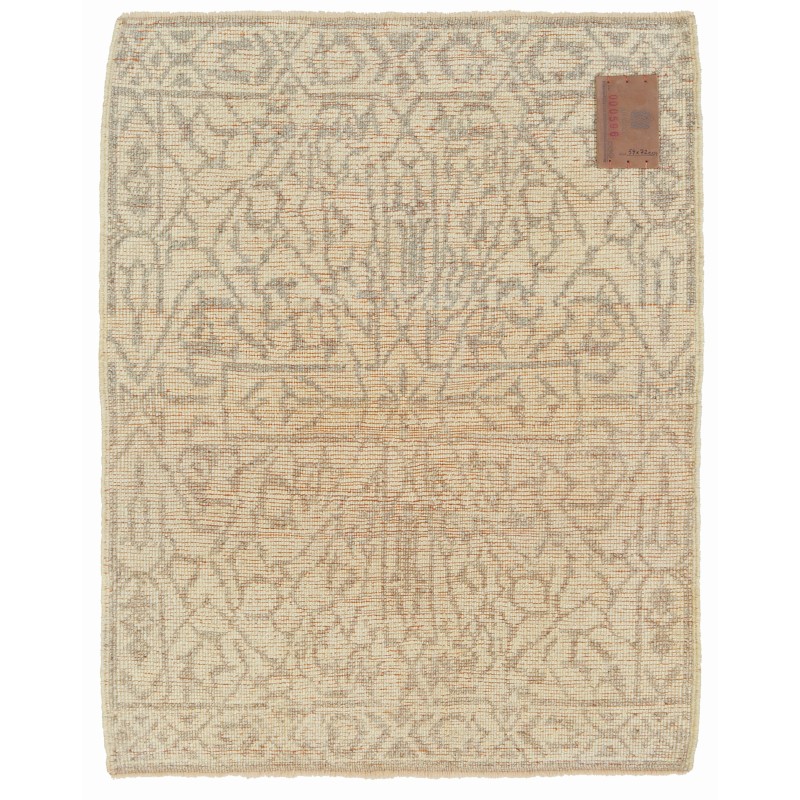



- Stock: In Stock
- Model: C50596
- サイズ: 72cm x 59cm
- Weight: 1.30kg
- SKU: ART596
この幾何学的な格子模様の絨毯は、エジプトのカイロ地域で作られた15世紀のマムルーク時代の絨毯の一部という印象を与えます。これらのデザインはしばしばワギレまたはサンプラーと呼ばれ、織り手の助けとして、またはデモンストレーションのために使用され、より大きな絨毯のデザインと製造のためのテンプレートやパターンとして作られました。これらは一般的に、散らし絨毯やマットの大きさの小さな作品です。
マムルーク絨毯は、イスラム世界のほとんどの絨毯織り地域に共通していた豊富な辺境放牧地と温暖な気候とは異なる物理的環境から発祥しました。北に位置するアナトリアを中心としたトルコの織りの広い伝統と関連がありながらも、これらの絨毯のデザインには、エジプトの伝統に深く根ざした、スタイライズされたパピルスの植物など、非典型的な要素が含まれています。彼らの独特な構成とレイアウトは、おそらく「マムルークブランド」を確立することができる独自の製品を開発しようとする試みを表しているのでしょう。また、イスラム世界の絨毯の世界ではほとんど類を見ないのは、S方向に紡がれたウールです。エジプトで右回りにウールを紡ぐ伝統は、以前から亜麻をリネン糸に紡ぐエジプトの伝統に由来すると主張されています。この植物の植物学的構造の詳細からは、ウールや綿のために中東全体で一般的に使用される反時計回りの方向で亜麻繊維を紡ぐことは不可能です。
シモネッティの色の組み合わせを持つマムルーク絨毯は、現在ではアナトリア、イラン、シリアの織りに多くのつながりを持つ、より早い伝統の一部として一般的に受け入れられています。メトロポリタン美術館のコレクションによく見られる「三色」のマムルーク絨毯は、1517年のエジプトのオスマン帝国征服の後も続く後の発展を表しています。このような絨毯は17世紀半ばまで、おそらくそれ以上に生産されたかもしれません。(ウォルター・B・デニー、[エクティアル、スーチェク、キャンビー、ハイダー、2011]による)。この絨毯のデザインは、私たちのマムルークタイプの絨毯コレクションからのデザイナーによって解釈され、鮮やかな色が使用されています。
This geometric lattice pattern rug has the impression that it is only part of a larger scheme-designed 15th-century rug from the Mamluk era, Cairo region, Eygpt. These designs have often been described as wagirehs or samplers and were said to have been used as weaver`s aids, or for demonstration purposes, made as a template or pattern for the carpet design and production of larger rugs, they are generally small pieces of the size of a scatter rug or mat.
Mamluk carpets originated in a physical environment that lacked the combination of abundant marginal grazing land and a temperate climate with cool winters that were common to most carpet-weaving areas in the Islamic world. While related to a broader tradition of Turkish weaving centered in Anatolia, far to the north, the designs of these carpets include atypical elements, such as stylized papyrus plants, that are deeply rooted in Egyptian tradition. Their unusual composition and layout probably represent an attempt to develop a distinctive product that could in effect establish a “Mamluk brand” in the lucrative European export market. The uncharacteristic color scheme—devoid of the undyed white pile and employing a limited range of three or five hues in much the same value—also suggests a conscious attempt to create a particular stylistic identity. Also virtually unique in the world of Islamic carpets is the S-spun wool. It has been argued that the tradition of clockwise wool spinning originated in Egypt because of the earlier Egyptian tradition of spinning flax into linen thread. Details of the plant’s botanical structure make it impossible to spin flax fiber in the more common counterclockwise direction utilized throughout the Middle East for wool and cotton.
Mamluk carpets with the color combinations seen in the Simonetti are now generally accepted as part of an earlier tradition that has many links to the weaving of Anatolia, Iran, and Syria. The “three-color” Mamluk carpets, well represented in the Metropolitan’s collection, represent a later development that continued well after the Ottoman conquest of Egypt in 1517. Many such carpets may have been produced well into the seventeenth century, and possibly even later. (Walter B. Denny in [Ekhtiar, Soucek, Canby, and Haidar 2011]). The design of the rug is interpreted by our designers from our Mamlouk-type rugs collection and vivid colors are used for this rug.
私たちが作ったオリジナルの絨毯です。昔の作り方、染め方全て守って明日のアンティーク絨毯を眼材しています。 この絨毯作るのに全部で 3 色使っています。
- Natural Wool Color 320 (羊そのままの色)
- Barley Corn 103 (羊そのままの色)
- Light Grey 106 (羊そのままの色)
上の番号は私たちのカラーコードです。()の中は、主な草木染めの材料です。
